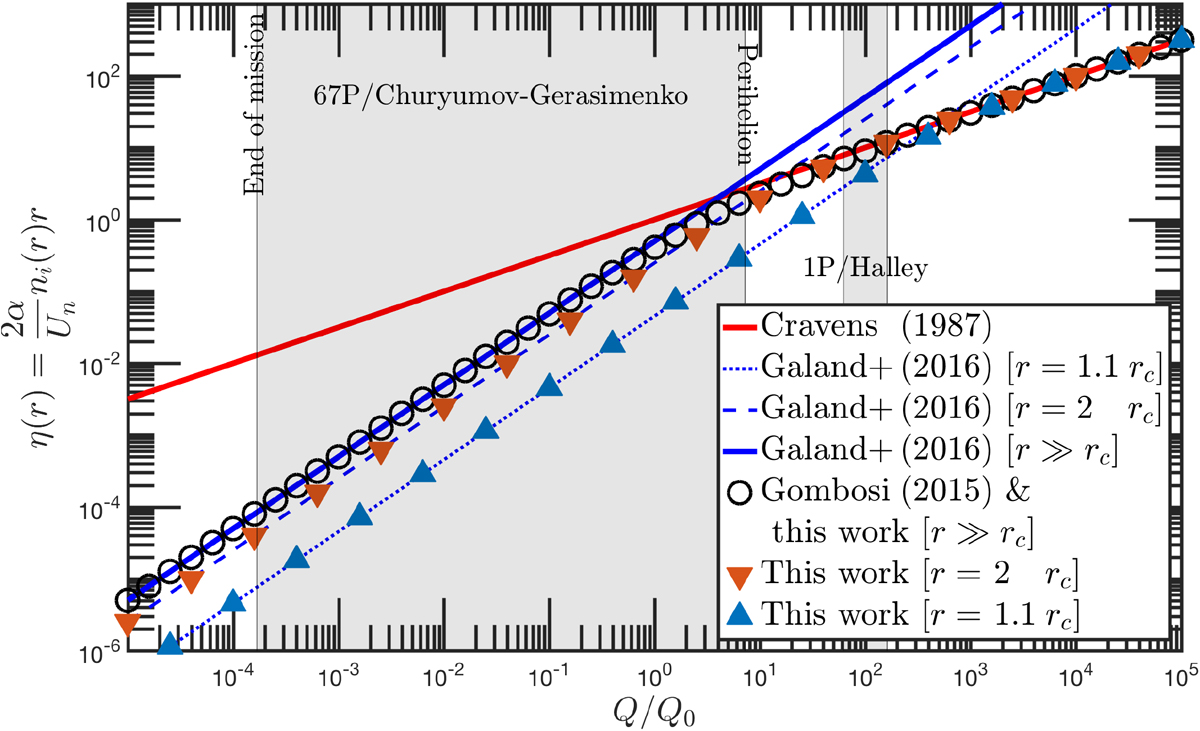Fig. 11

Dimensionless parameter 2αni(r)r∕Un (Eq. (27)) as a function of Q∕Q0 (Q0 defined by Eq. (20)). The ion number density ni is derived from Cravens (1987; red solid line, Eq. (31)), Galand et al. (2016; Eq. (29)) assuming r = 1.1 rc (dotted blue line), r = 2 rc (dashed blueline), and r ≫ rc (solid blue line, Eq. (30)), Gombosi (2015) or this work assuming r ≫ rc (black circles, Eq. (28)), and this work assuming r = 1.1 rc (blue upward-pointing triangles, ▴), r = 2 rc (orange downward-pointing triangles, ▾). Photoabsorption is ignored here. Conditions at 1P during the Giotto encounter and at 67P during the Rosetta escort phase are overplotted as gray areas. We provide a broad range of values for 1P as uncertainties remained on the electron temperature and therefore on the e− -ion dissociative recombination rate, which depends on the electron temperature. This last was assumed to be between 150 K (upper bound) and 1000 K (lower bound; see Table 2). For 67P, the dynamic range of Q∕Q0 is primarily driven by the outgassing rate Q, from 1025 (end of mission) to 6 × 1028 s−1(perihelion), and the heliocentric distance, which affects the photoionization frequency.
Current usage metrics show cumulative count of Article Views (full-text article views including HTML views, PDF and ePub downloads, according to the available data) and Abstracts Views on Vision4Press platform.
Data correspond to usage on the plateform after 2015. The current usage metrics is available 48-96 hours after online publication and is updated daily on week days.
Initial download of the metrics may take a while.


